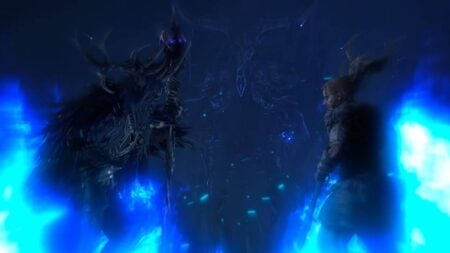Skip To...
Exploration is a tricky subject in open-world games. Developers of linear titles never have to worry about where the player will go. That’s a constant concern once the map opens up. Freeform titles such as Minecraft can get away with just letting the player loose, but narrative titles need some way of pointing the way toward critical objectives. It’s a problem that every open-world game from Grand Theft Auto and Starfield to Tears of the Kingdom has to confront. Avatar: Frontiers of Pandora employs a mechanic that too few open-world games include, even though most of us would have more fun if they did.
Guided vs. Exploration Mode in Avatar: Frontiers of Pandora

Avatar: Frontiers of Pandora lets the player swap between two modes: Guided and Exploration. Guided Mode is the classic Ubisoft experience, employing direct instructions, glowing objectives, and a map flooded with symbols to mark various points of interest. This handholding ensures the player never gets lost or confused. The major advantage is that the player gets right to the good stuff. Guided Mode allows gamers who may only have a few hours to play each week to maximize their time by cutting straight to the action. It turns the game into a theme park, putting up signs that allow the player to navigate from one attraction to the next.
Exploration Mode strips away the markers, instead focusing on, well, exploration. Without constant pillars of light to mark your way, you’re left to discover things for yourself. Do you want to know where the next Na’vi camp is? What about the RDA gas harvester that’s polluting the land and preventing you from gathering crafting ingredients? You’ll need to pay attention to what NPCs say if you want to find them. This mode slows you down, forcing you to take a methodical approach to travel and navigation. It makes the game far more immersive as a result. Frontiers of Pandora isn’t the first game to include this mechanic, but it does so well enough that it deserves to be pointed out.
Leaving the Beaten Trail

There are obvious pros and cons to both methods. As much as some players love to poke fun at Ubisoft and its habit of drowning maps in glowing POI markers, there’s an audience for this approach. Some players dislike wandering aimlessly, waiting to stumble upon the next link in their quest, and that’s fair. Others love Elden Ring precisely because it dumped them into a giant world overflowing with secrets and said “you want to get to Altus Plateau? Go figure it out.” Because there’s an obvious desire for both methods, more games should follow the path taken by Avatar: Frontiers of Tomorrow and provide a mechanic that lets players choose.
The Pandoran jungle is as large as it is dense. Navigating it is a challenge. That’s especially true before you gain access to an Ikran mount and an aerial view. The game isn’t as dense with secrets or as dependent upon them as Elden Ring, but there’s still a good amount to discover and a legitimate risk of missing something. For some players that risk is part of the appeal of Exploration Mode. There’s a satisfaction in knowing you could have overlooked a Skill point-bearing flower or a quest to help the Aranahe but didn’t. There’s a joy to discovering things yourself. Whether you love the risk or hate the uncertainty, Frontiers of Tomorrow meets you where you are.
Avatar: Frontiers of Tomorrow and the Problem of Choice

Though Avatar: Frontiers of Pandora is far from perfect, it may have the perfect solution to exploration. The option to swap between Guided and Exploration Mode isn’t a good fit for every open-world game. That said, it would be a significant improvement for many. Want to find your own way? You can. Want to cut straight to the action? You can. Avatar doesn’t condescend to players, but it doesn’t pretend that everyone wants Sherlock Holmes sleuthing as a prerequisite for a quest to kill 10 rats. Open-world titles almost always claim to care about giving players freedom of choice. It’s time more games took their own words seriously.
Avatar: Frontiers of Pandora is available for PC, PlayStation 5, and







